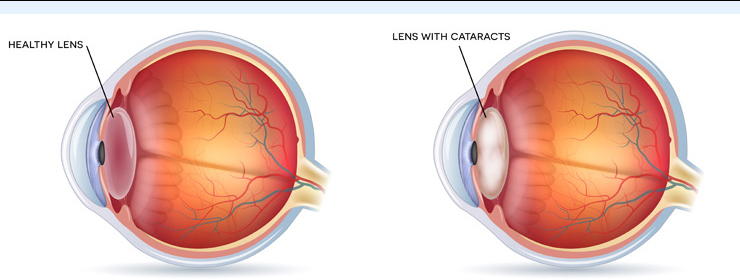It is not known why cataracts occur in all instances but studies on the cause of cataracts will soon teach us how to more successfully treat and prevent them. The most commonly known type of cataract is age related.
You may not notice a slight change in your vision, as cataract starts out very tiny, but as it grows from the size of a pin head, you may notice that your vision is becoming blurry, and you may feel you are looking through dirty lenses. Object edges may appear to fade into one another and colors may not appear as bright as they should.
The most common symptoms of a cataract are:
» Cloudy or blurry vision.
» Problems with light.
» Problems with headlights that seem too bright.
» Problems with glare from lamps.
» Problems with very bright sunlight.
» Colors that seem faded.
» Poor night vision.
» Double or multiple vision.
» Frequent changes in glasses or contact lenses.
» Eyeglasses are no longer effective.
» Contact lenses are no longer effective

With the formation of a cataract, activities like reading, bowling, or driving can be difficult. Fortunately, vision can be restored quickly, allowing the patient to return home within a few hours. With new advances in cataract surgery, vision improvement begins almost immediately, and an eye patch isn't even needed.
Cataract surgery is the most common operation in the world. In the United States, more than 2.7 million procedures are performed annually. (National Institutes of Health)
There are many millions of cases of early cataracts among Americans aged 40 and older, and 50 percent of people older than 65 have developed significant cataracts. (National Institutes of Health)